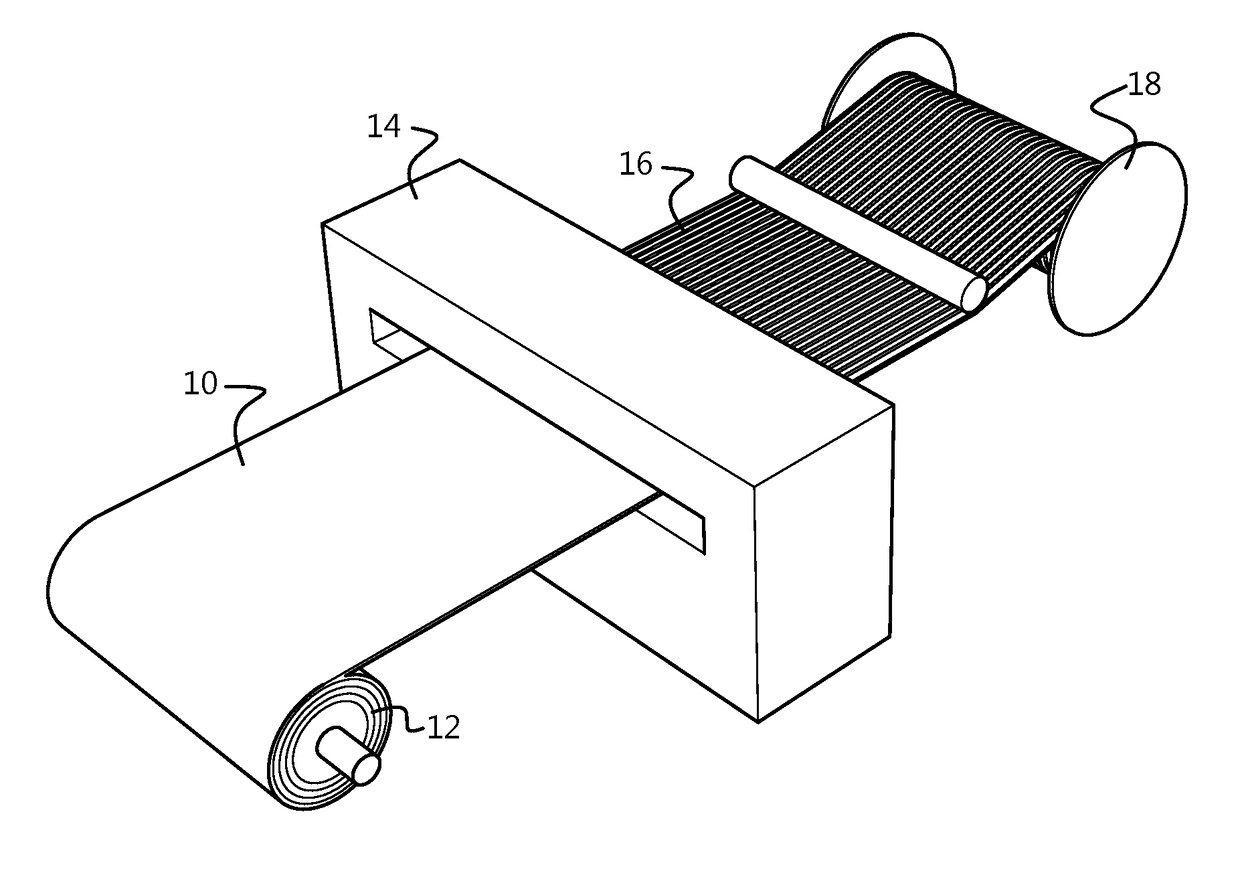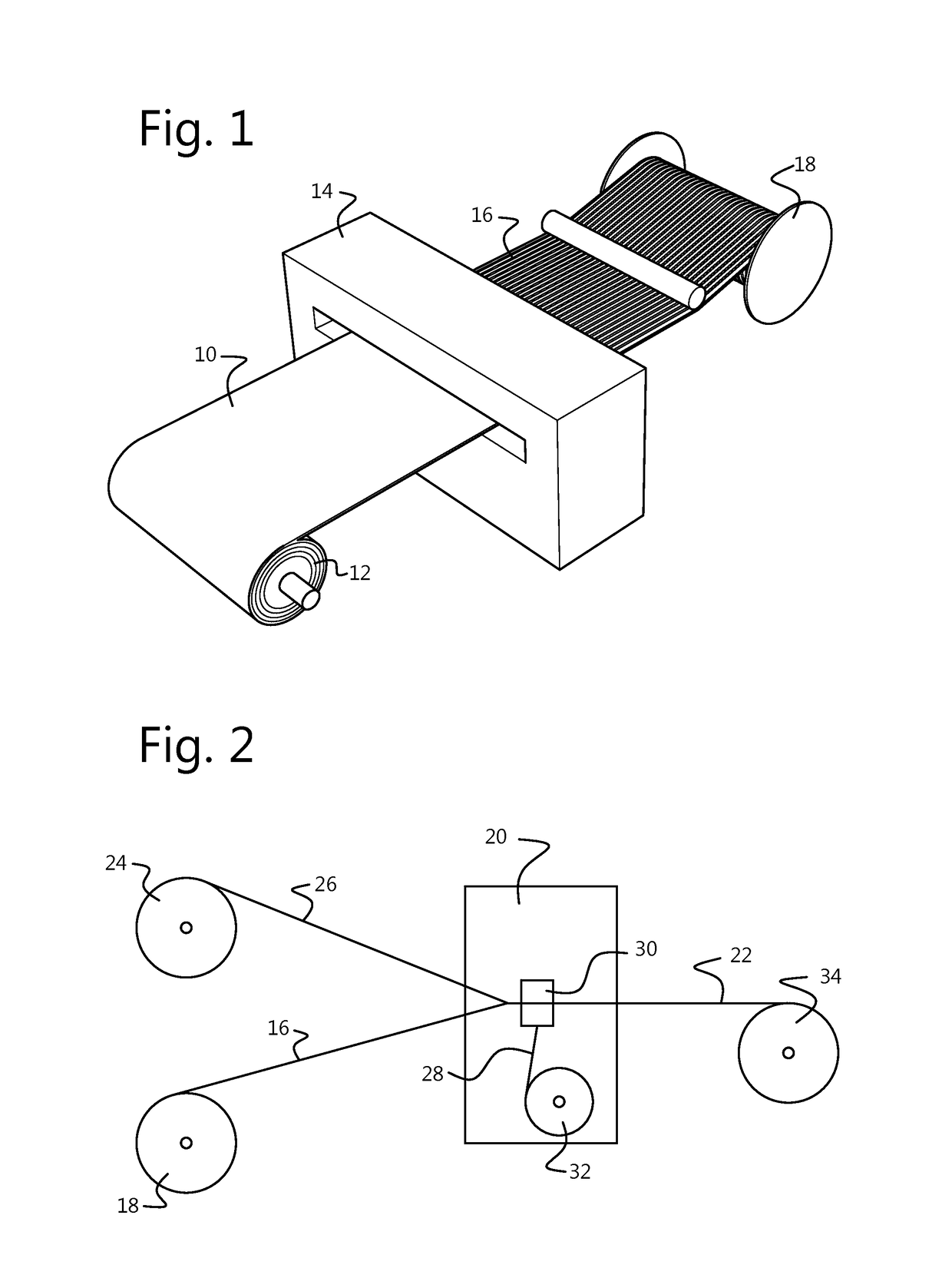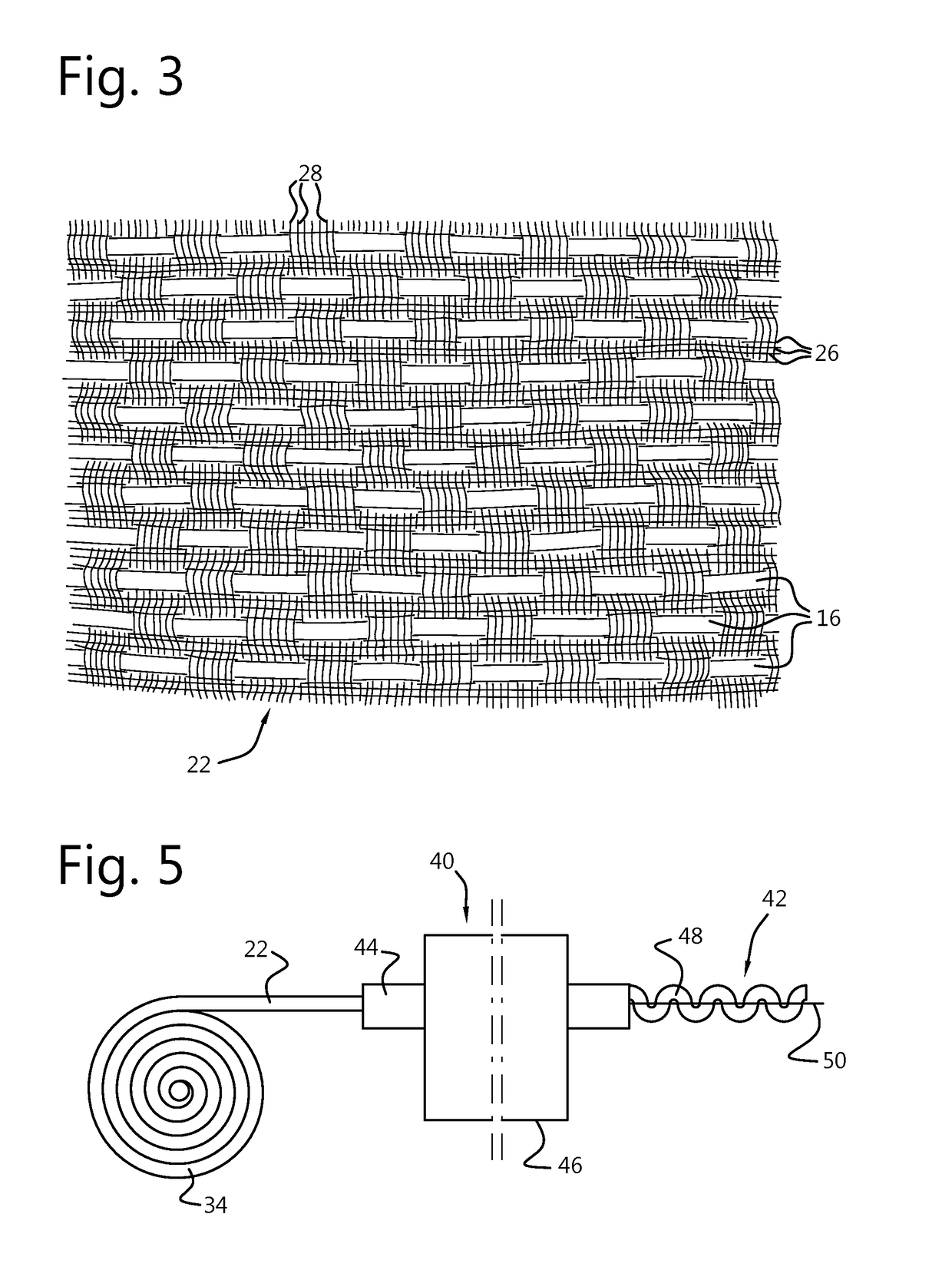Use of a foamable polymer filament, and foamed fabric
a polymer filament and foam technology, applied in the field of foam materials, can solve the problems of loss of shock absorption property, and achieve the effect of facilitating air or moisture transpor
- Summary
- Abstract
- Description
- Claims
- Application Information
AI Technical Summary
Benefits of technology
Problems solved by technology
Method used
Image
Examples
Embodiment Construction
[0045]An exemplary procedure for forming filaments of foamable polymeric material is shown in perspective view in FIG. 1. According to the figure, an extruded, cross-linked sheet 10 of foamable material is fed from a roll 12 through a strip forming device or shredder 14. The sheet 10 is cross-linked PE available from Sekisui under the name Alveocel™ LUT 4501 1.3 mm. Other similar materials are available from Trocellen GmbH and appropriate procedures for forming such foamable cross-linked polymeric materials are disclosed in EPO476798. On passing through shredder 14, the sheet 10 is cut into multiple filaments 16, each having a width of 4 mm, which are subsequently wound together onto a spool 18. The wound strip has a dTex value of around 38 000.
[0046]FIG. 2 shows in schematic view a weaving machine 20 operational to integrate the filaments 16 into a woven textile 22. A number of spools 18 produced according to the process of FIG. 1 are mounted for delivery of filaments 16 into the w...
PUM
| Property | Measurement | Unit |
|---|---|---|
| thickness | aaaaa | aaaaa |
| thickness | aaaaa | aaaaa |
| temperature | aaaaa | aaaaa |
Abstract
Description
Claims
Application Information
 Login to View More
Login to View More - R&D
- Intellectual Property
- Life Sciences
- Materials
- Tech Scout
- Unparalleled Data Quality
- Higher Quality Content
- 60% Fewer Hallucinations
Browse by: Latest US Patents, China's latest patents, Technical Efficacy Thesaurus, Application Domain, Technology Topic, Popular Technical Reports.
© 2025 PatSnap. All rights reserved.Legal|Privacy policy|Modern Slavery Act Transparency Statement|Sitemap|About US| Contact US: help@patsnap.com



